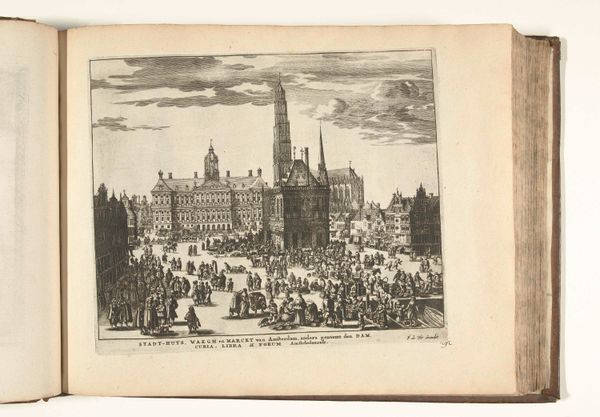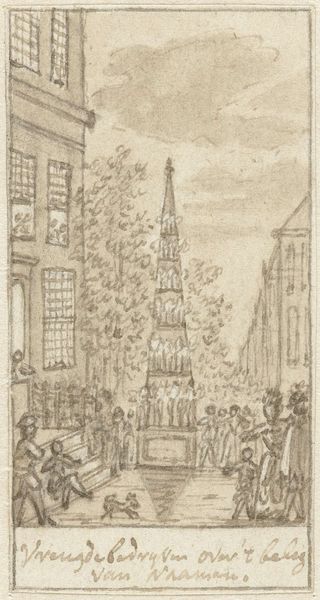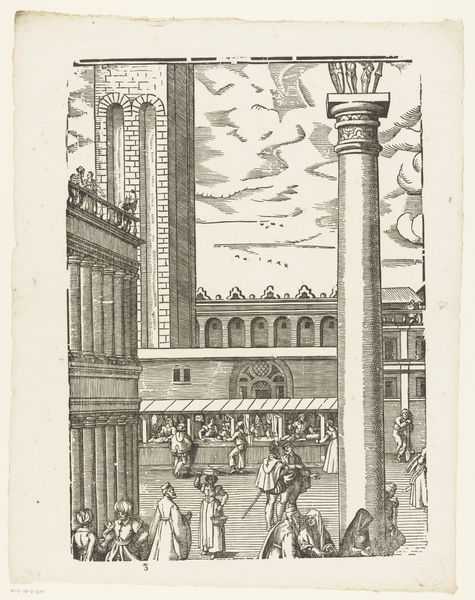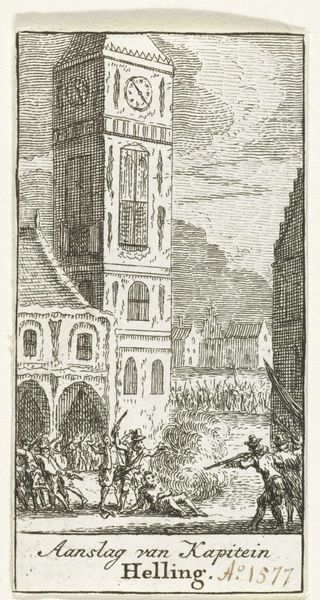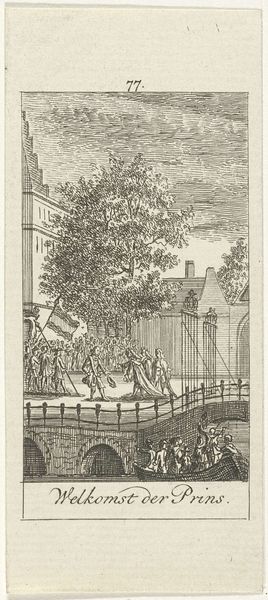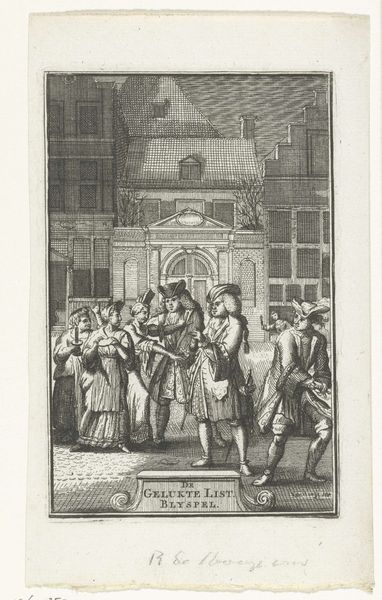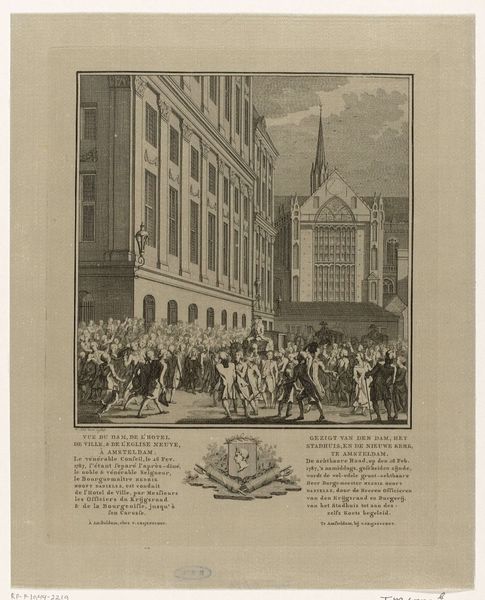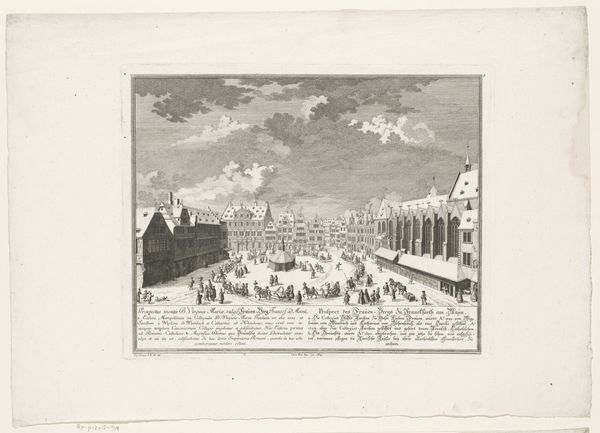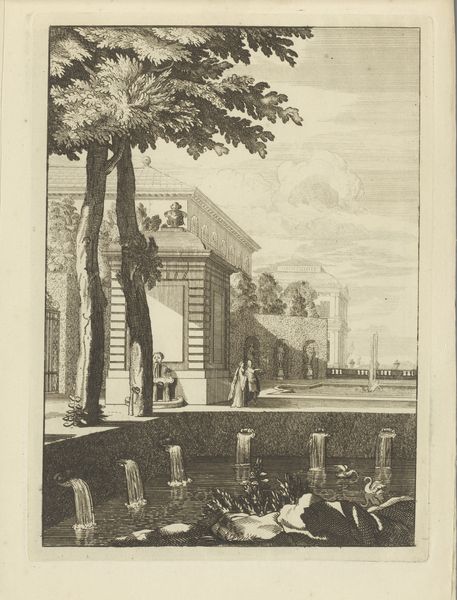
Dimensions: height 80 mm, width 41 mm
Copyright: Rijks Museum: Open Domain
Editor: So, this is "Vreugdevuur bij de viering van de inname van Namen, 1695," or "Bonfire celebrating the capture of Namur, 1695," an engraving made between 1779 and 1781 by Simon Fokke, currently held at the Rijksmuseum. It depicts what seems to be a joyous occasion in the city, but rendered in stark black and white. What symbolic weight does this image carry for you? Curator: Immediately, the bonfire itself commands attention. More than just a celebration, fire often signifies purification, renewal, but also destruction. Consider how this burning structure reflects not just joy at taking Namur, but perhaps a cleansing of the old order? Editor: So, it's not just a street party then? Curator: Not at all. Look at the architectural backdrop – the ordered, grid-like windows, contrasted with the chaotic gathering of people and the wildness of the fire. What might that contrast tell us about the perceived control and potential disruption during wartime or, rather, peacetime celebration after a battle? Editor: I see your point! The rigid architecture embodies order, while the bonfire and the crowd below exude chaos. But where does the bonfire fit in all this? Curator: The bonfire in itself becomes an ordering device! Its conical structure echoes societal hierarchies, literally pointing towards the heavens. This links temporal victory to a sense of divine favour. The flames themselves are transitional states, solid fuel transformed into ethereal light and smoke, thus connecting earthly and spiritual realms. Do you think it worked? Editor: Well, I definitely missed that. Now I realize the artist probably intended to represent way more than just a bonfire celebration! Curator: Precisely! And these historical prints become potent cultural artifacts when we recognize the layers of meaning embedded within their symbols. Always dig beneath the surface.
Comments
No comments
Be the first to comment and join the conversation on the ultimate creative platform.

